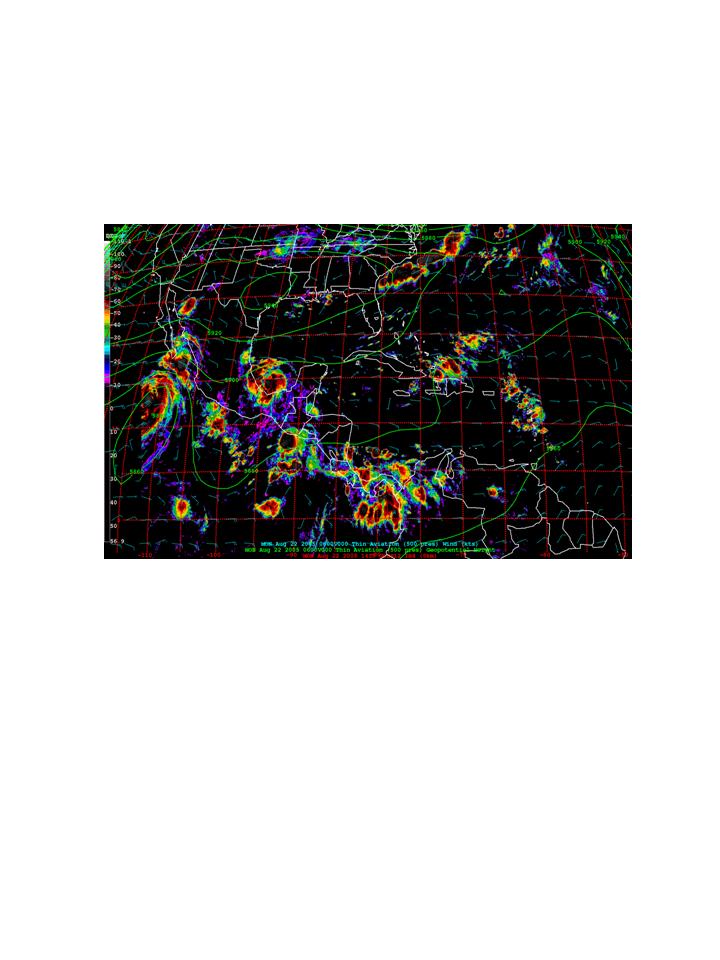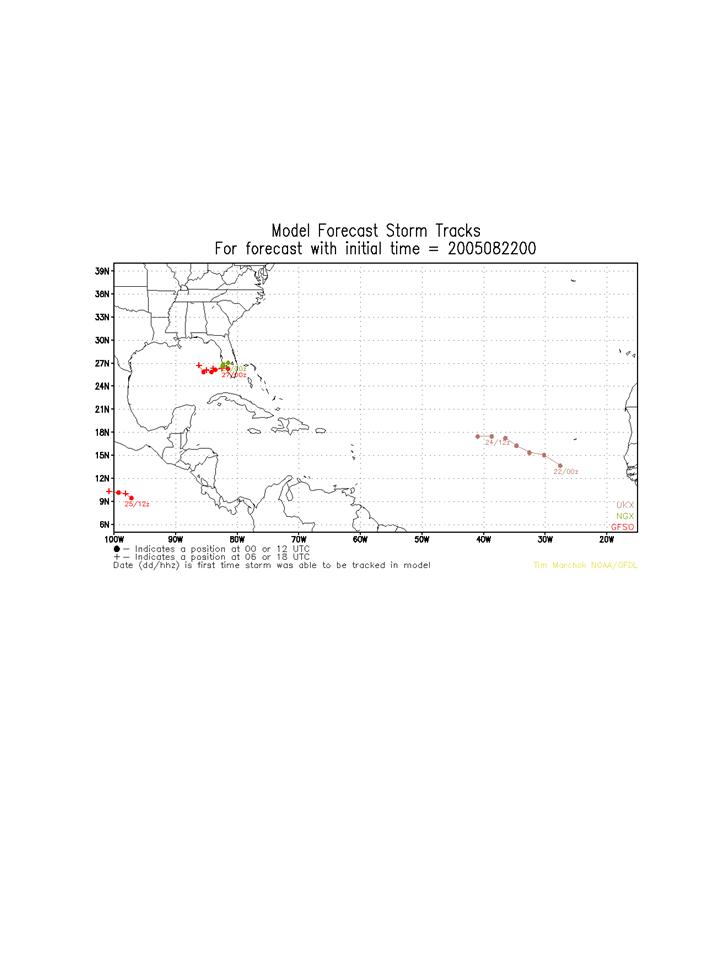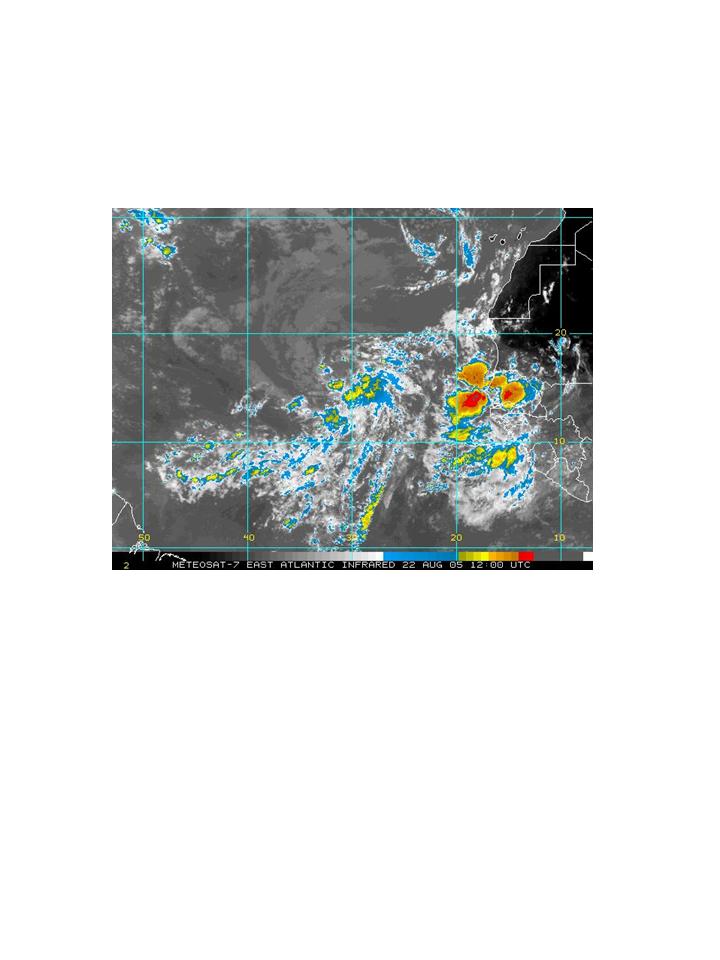IFEX daily log
Monday, August 22, 2005
Today the test flight occurred. There were some delays in getting N43RF ready
for takeoff, so the takeoff time was not until 1530 UTC. The data acquisition system for
the microphysics probes on N43RF was repaired and the probes are functioning well.
Some of the communications issues were resolved; namely, the satellite communications
on the NRL P-3 are functioning reliably now. There were some problems with the
transmission of LF data from N43RF, however. After landing this was repaired. There
was a test flight planned for the following day involving N42RF, but that was postponed
a day due to a computer malfunction. Therefore, another test flight is planned for N43RF
and the NRL P-3, this one lasting less than two hours. The primary purpose of this test
flight is again to test the transmission and retrieval of LF radar imagery from N43RF to
the NRL P-3. Another test will be performed where RAMSDIS satellite imagery from a
server at HRD will be downloaded onto N43RF while the aircraft is airborne. This was
successfully test on N42RF while it was in the hangar, but this will mark the first test
while it is airborne.

The tropical wave that was over the Yucatan peninsula the previous day has
developed into Tropical Depression #11 (Fig. 20). The system is very close to the coast,
and little further development is anticipated. It is not a factor for operations. The
remnants of T.D.#10 persist north of the islands. The system shows some hint of a
 circulation in the midlevels. More of the models are starting to suggest that this system
could develop over the next 2-3 days (Fig. 21). Some preliminary track models indicate
that this system could move due west and emerge into the southeastern Gulf of Mexico,
tracking westward. This system will bear watching over the coming days. It could be a
circulation in the midlevels. More of the models are starting to suggest that this system
could develop over the next 2-3 days (Fig. 21). Some preliminary track models indicate
that this system could move due west and emerge into the southeastern Gulf of Mexico,
tracking westward. This system will bear watching over the coming days. It could be a
 possible target for RAINEX if it becomes a mature hurricane. It could also be a
candidate for frequent monitoring earlier in its lifecycle if it continues to show a
likelihood for development. Such a mission could also serve as a higher-level test
mission for RAINEX as well. The wave that moved off Africa two days ago shows a
broad cyclonic circulation but no convection associated with it (Fig. 22). The system is
far north, and indications are that if it does develop it will recurve to the north before
being a factor for operations.
possible target for RAINEX if it becomes a mature hurricane. It could also be a
candidate for frequent monitoring earlier in its lifecycle if it continues to show a
likelihood for development. Such a mission could also serve as a higher-level test
mission for RAINEX as well. The wave that moved off Africa two days ago shows a
broad cyclonic circulation but no convection associated with it (Fig. 22). The system is
far north, and indications are that if it does develop it will recurve to the north before
being a factor for operations.
Rob Rogers
HRD Field Program director
Return to IFEX calendar page
![[Atlantic Oceanographic and Meteorological Laboratory]](../../../hrd_top_logo7.jpg)
![[OAR/DOC/NOAA Logos]](../../../oar_noaa_doc_logos3.jpg)